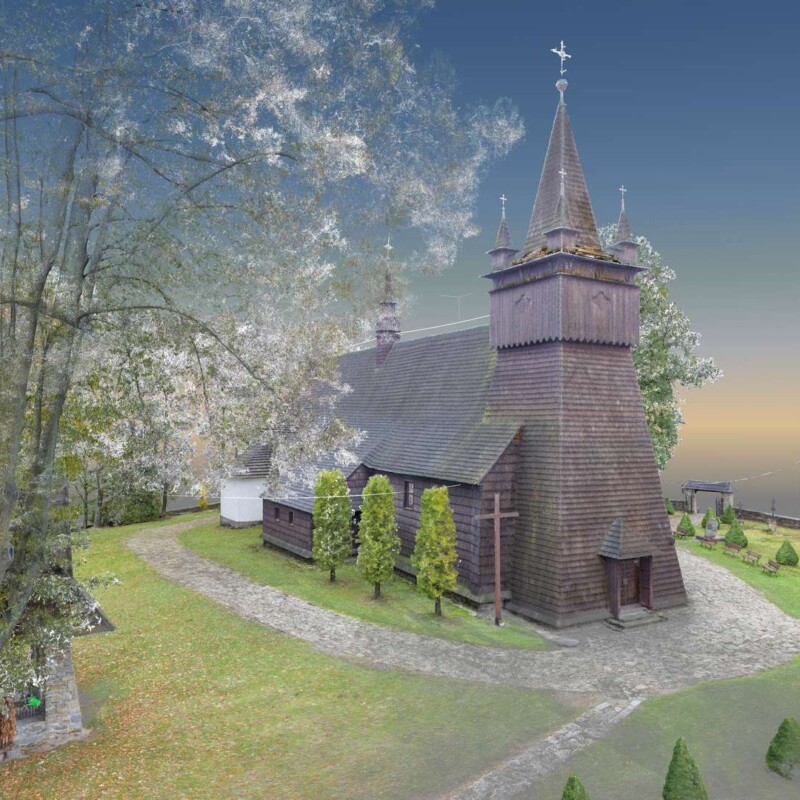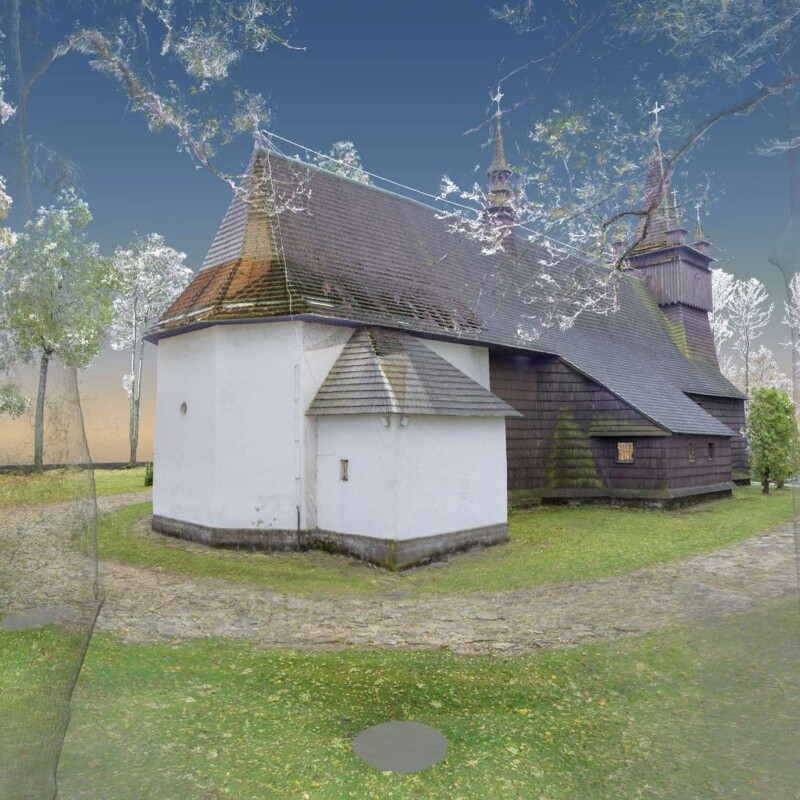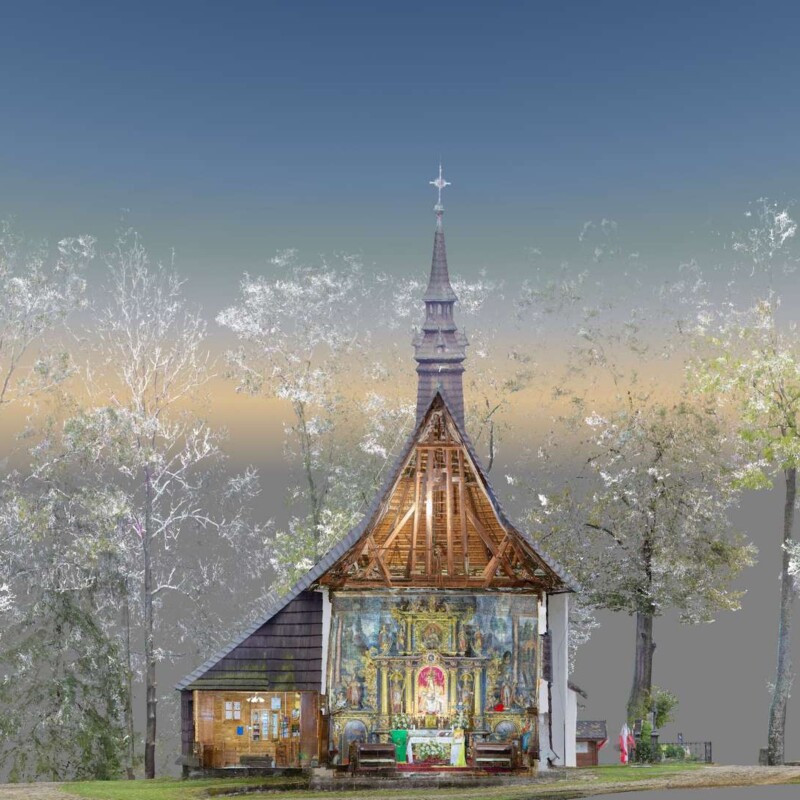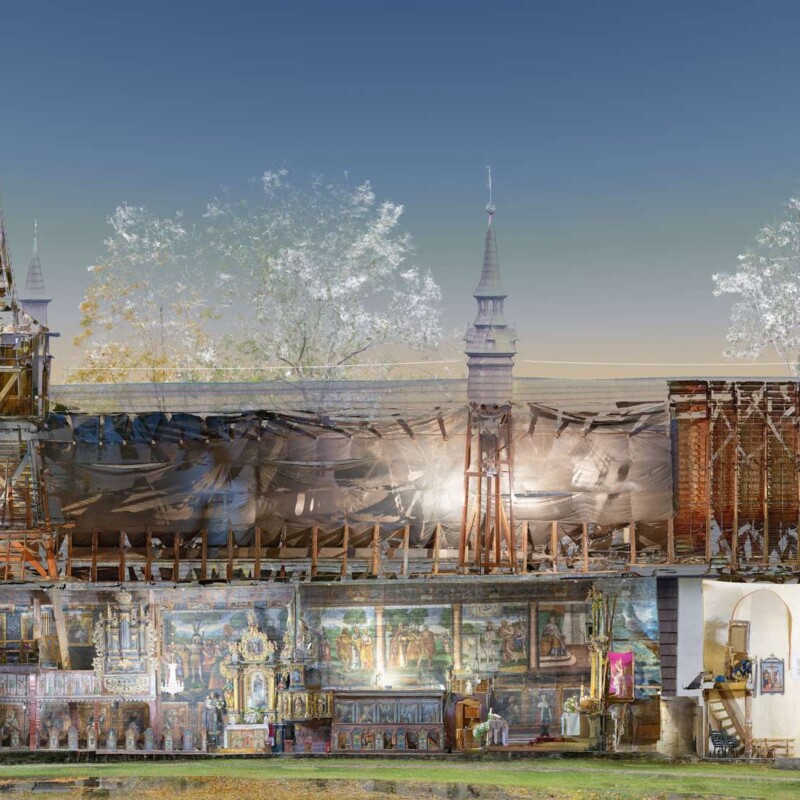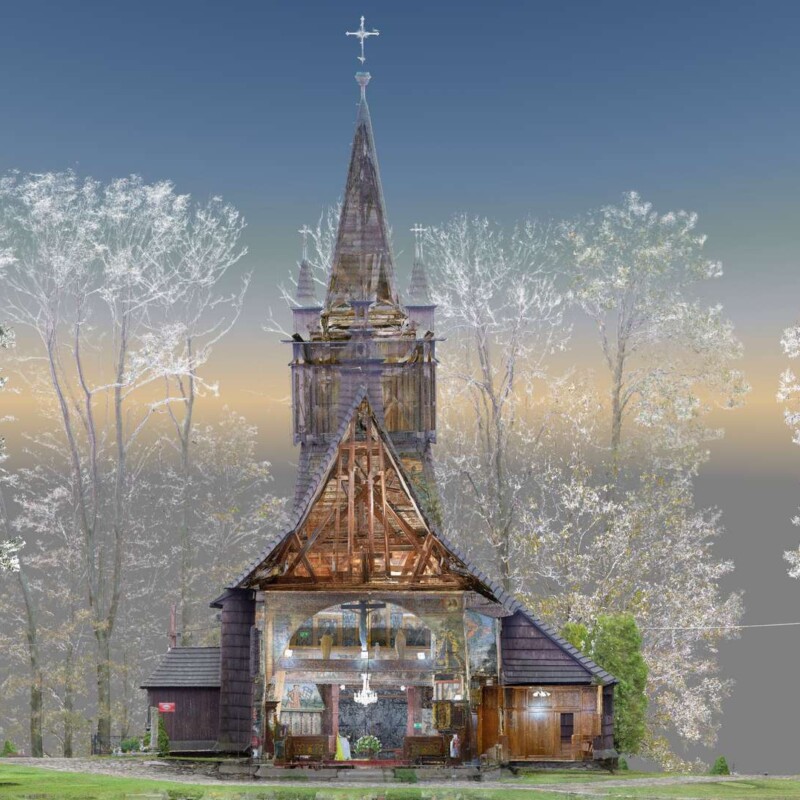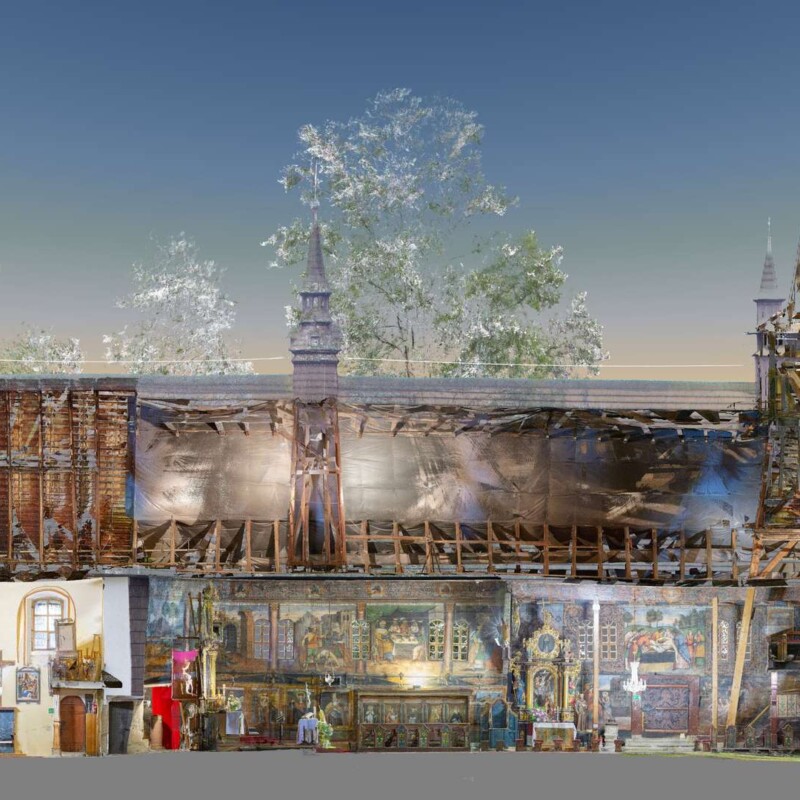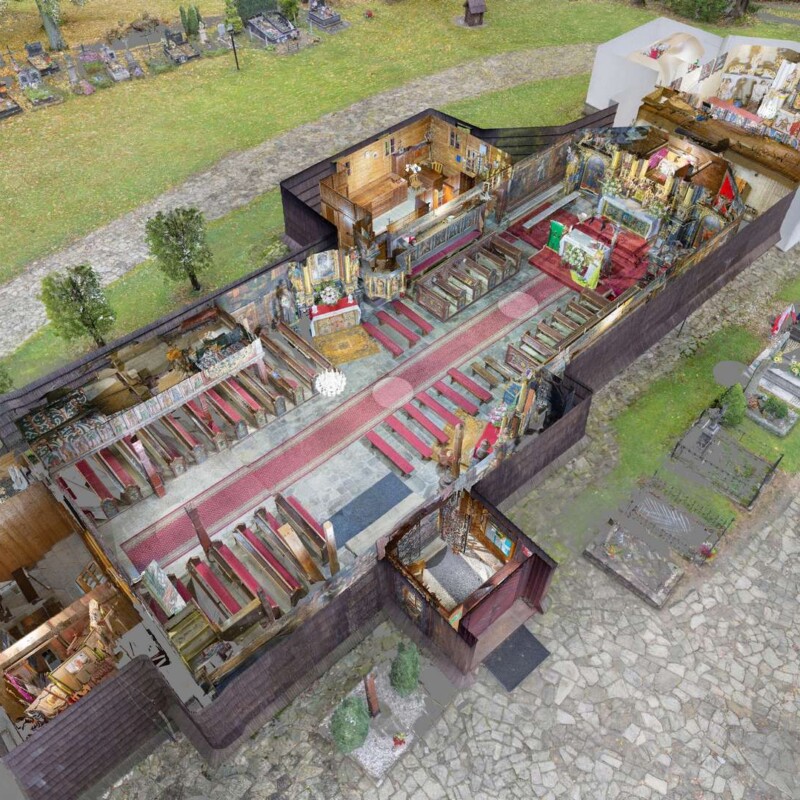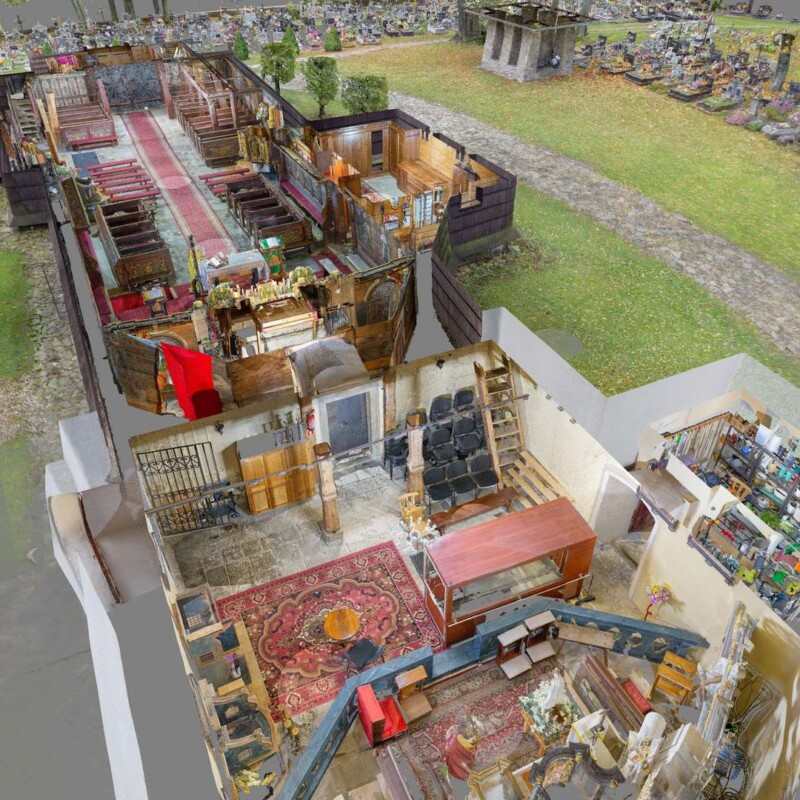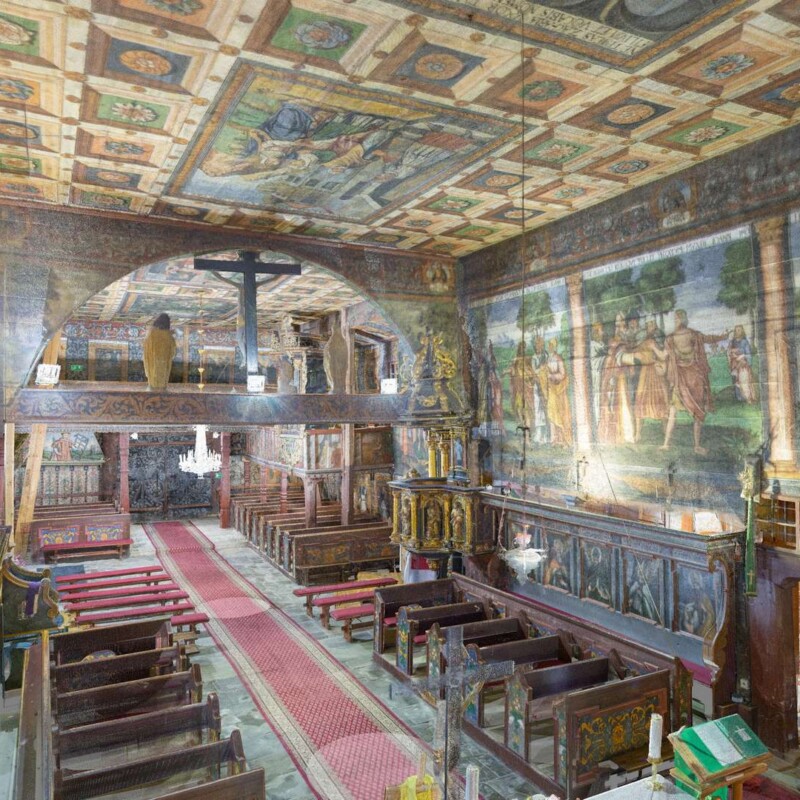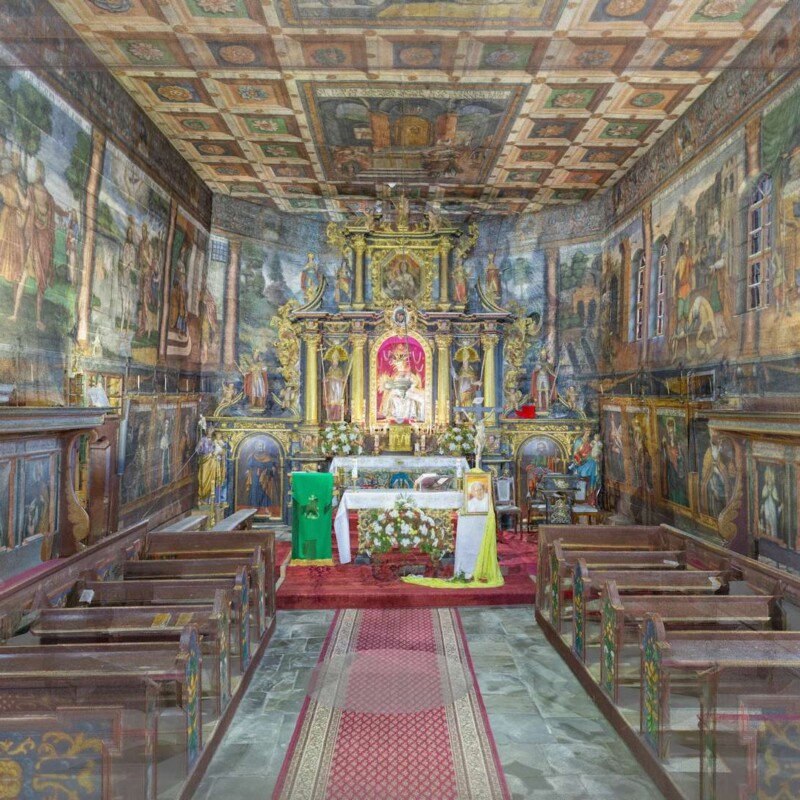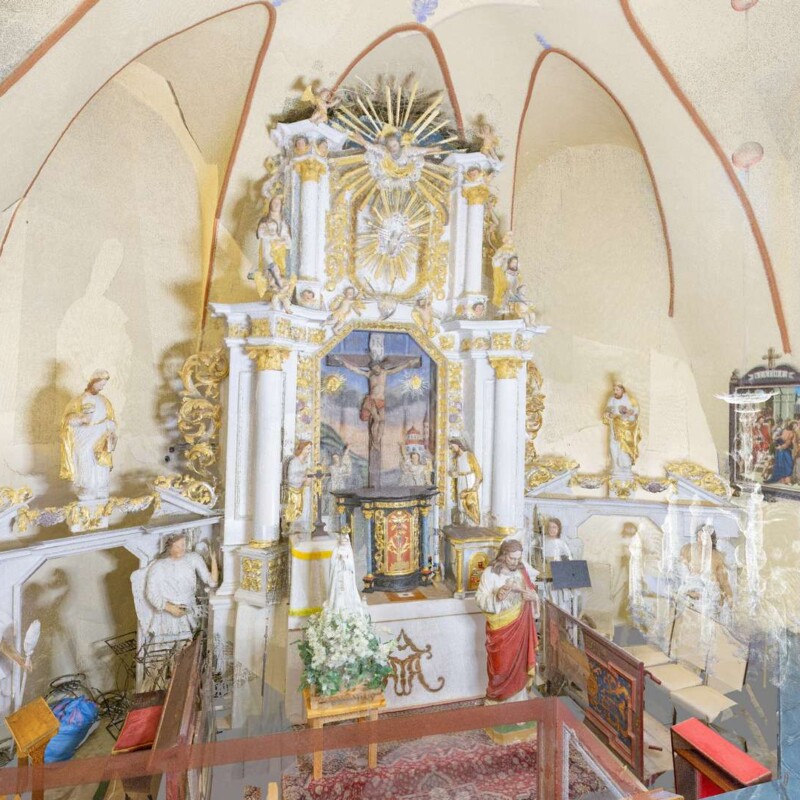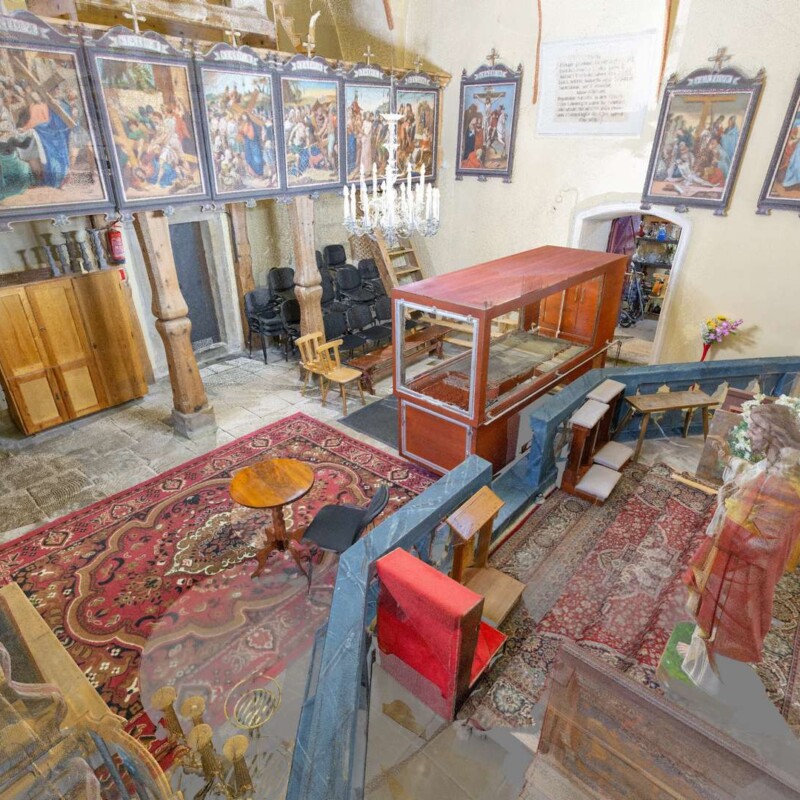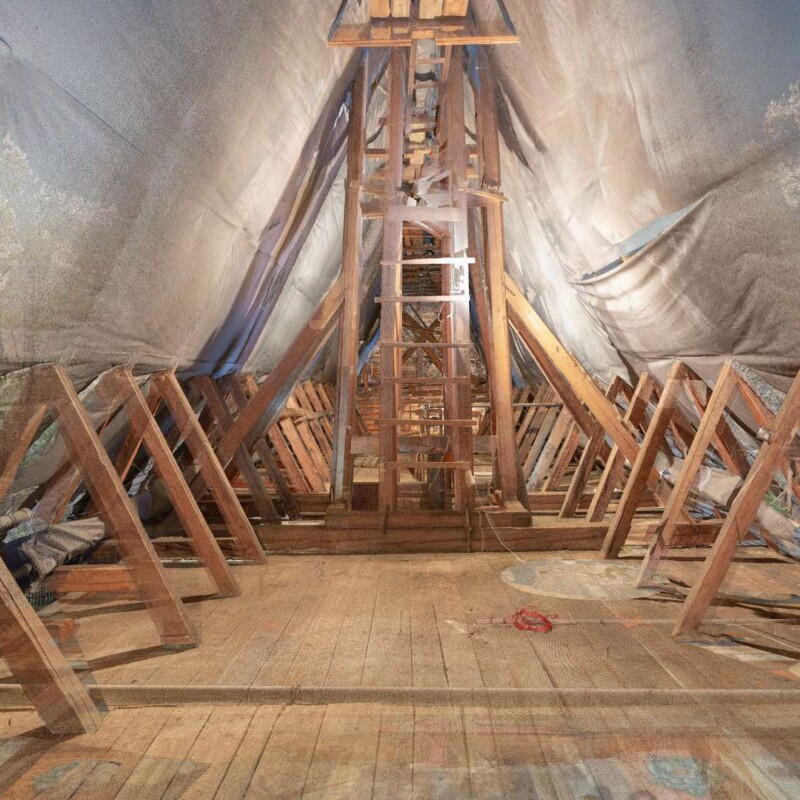Catholic church of St. John the Baptist, Orawka
The Church of Saint John the Baptist in Orawka is the oldest Catholic church in the Upper Orawka area. The church owes its unique position both to the fact that it is the oldest in the region, and to its original design, including famous paintings. Upper Orawa, bordering with Podhale, did not belong to Poland from the Middle Ages to 1918, but was part of the Kingdom of Hungary. In the 16th and 17th centuries, however, it was settled mainly by Catholics and Poles. Orawka was founded in the second half of the 16th century. Protestantism dominated in Orawa at that time. The task of reintroducing Catholicism was undertaken by the priest Jan Szczechowicz from Ratułów in the Podhale region.
In around 1650, he established a parish in Orawka and built the first church, which, after expansions, has survived to this day. The church is about 12 metres in height, with a length of 19 metres. The earliest extensions were the narrow chancel with an altar and a wide nave intended for the faithful. They were built using a log frame structure. This means that the walls are made of processed tree trunks, which are stacked on top of each other and connected at the corners with notches, known as cog joints.
In the first half of the 18th century, the successors of Father Szczechowicz added the brick chapel of Our Lady of Sorrows to the chancel. From the west, a tower was erected at the beginning of the 20th century. The unique painted decor of the chancel and the nave comes from the 17th and 18th centuries. The paintings depict scenes from the life of St. John the Baptist, medallions with Christ and the Apostles and a gallery of images of saints venerated in Hungary.
Botanical motifs are used as a decoration. The illustrations of the Ten Commandments, placed on the ledge of the balustrade of the choir, are also worthy of note. The furnishings of the church come from the same time as the paintings. The main and side altars, pulpit, decorative pews in the chancel, pews for the faithful, confessionals and the choir, in terms of style, are Baroque. The tombstones of many priests have been preserved in the stone floor of the church. The tombstone of Father Jan Szczechowicz is in the center in front of the main altar.
Application – a virtual walk around the church
The church in Orawka was built using larch wood. The walls, roof and spires are clad in shingles … in other words, small, thin, tapering pieces of wood that are laid out to overlap one another. The form of the church is anchored from the east by a solid tower which covers the vestibule and part of the single nave … the space assigned for the congregation. The chancel is narrower than the nave. Its polygonal form closes the church at the eastern end. The sacristy adjoins it on the northern side. Unusually, in the eighteenth century, a brick-built chapel was added at the eastern end.
The tower, which rises gently from the gabled roof, is the only area to have walls leaning slightly towards each other. It culminates in a cuboid, timber-clad area forming a chamber which is crowned by a pyramidal spire with a turret at each corner. In the centre of the main roof is a smaller spire, which serves as a bell tower. The charm of the interior springs from the consistently planned, painted decoration in the form of the polychromes that cover not only the walls and ceiling, but also the choir.
The paintings on the ceiling feature a leitmotif in the form of boxlike elements. They’re known as coffers and here, they create a compositional order. The box-like coffers are decorated with various flowers at their centre. The predominant colours are yellow, green and orange. Between the coffers there are several rectangular areas filled with depictions of scenes from the life of John the Baptist. They can also be found decorating the walls.
The figures are almost life-size. The scenes include the Annunciation to Zechariah, the Visitation of St Elizabeth, the proclamation of the people and the conversations with the Pharisees. The tragic end of the prophet’s life, the famous scene with his severed head on a tray, also features.
At the bottom of the walls, from the floor to the height of an adult man, there is a strip of images depicting bishops. They are shown from the waist upwards. The central section of the altarpiece at the high altar contains a Pietà … in other words, a sculpture depicting the Madonna seated, holding the body of her Son, the Redeemer, after his death in torment on the Cross, on her lap. It’s the most compelling part of the altarpiece … a painted, wooden sculpture, set against a red background in an arched niche. Both Mary and Jesus are wearing golden crowns capped by a cross. There are rays of gold streaming from the crowns in various directions.
The Madonna is wearing a golden mantle, with a silver robe beneath it.
Her rich, metallically gleaming garments contrast with Christ’s naturally rendered skin, covered only by a loin cloth. Christ’s body is lying in His mother’s lap, with his head to the left and his legs, bent at the knees, to the right. Christ is naked, wearing only a loincloth. His torso rests on his mother’s lap. With her right hand, she holds his head lovingly. Her legs, bent at the knees, rest on the ground. Christ’s right arm hangs down lifelessly. His left arm is hanging down, whilst his right arm is bent at the elbow and resting on his abdomen.
The red wound in Christ’s right side has been realistically rendered. It is deep and filled with blood. Drops of blood run down the Saviour’s body. The wounds in his hands, from the nails that pierced them, are clearly visible.


